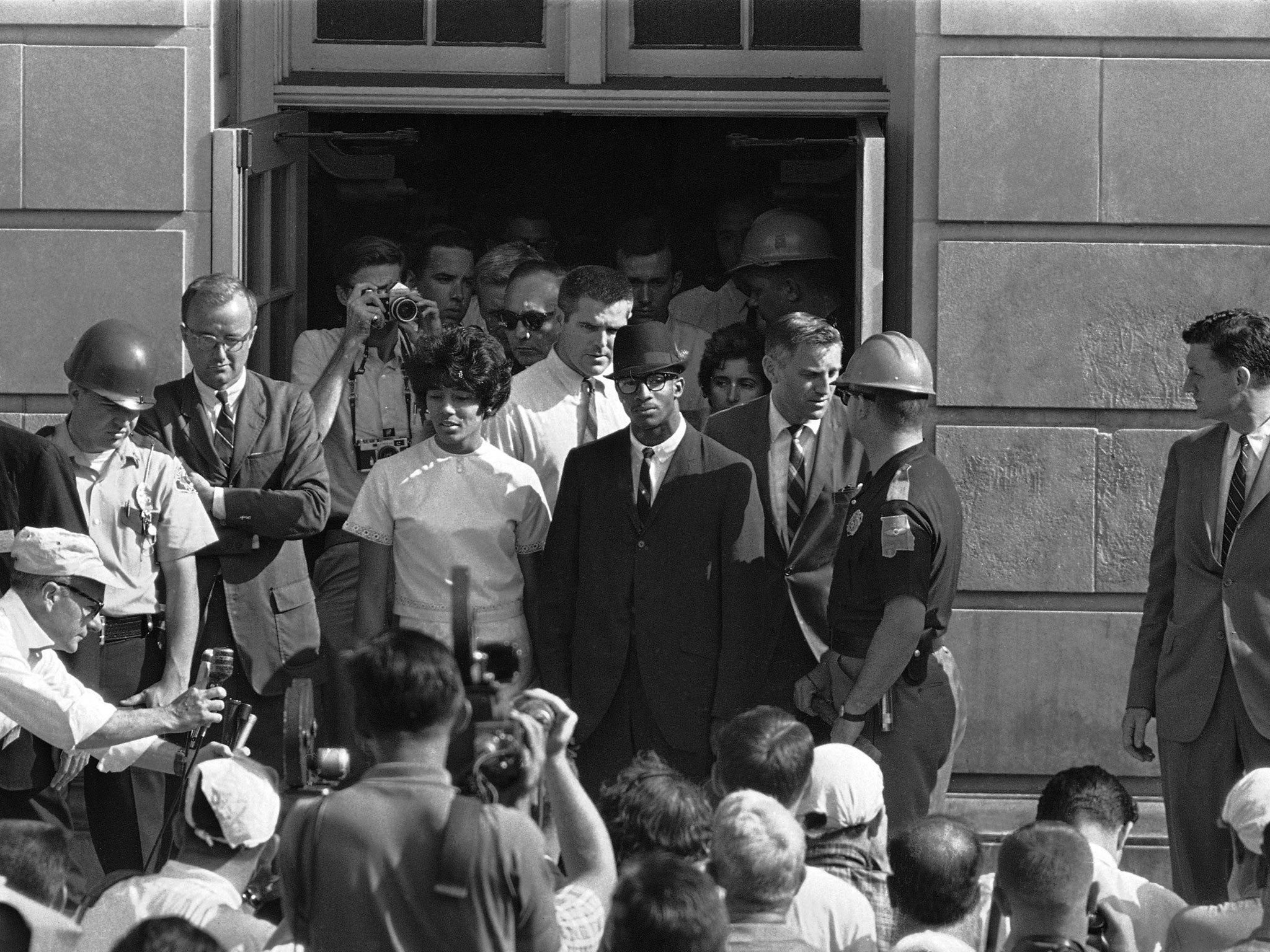James Hood: Civil-rights pioneer who helped end US segregation

In the history of the US civil rights movement it is remembered as "the stand in the schoolhouse door" – when James Hood was admitted to the University of Alabama in June 1963 after a charged confrontation pitting the Kennedy administration against the South's most redoubtable champion of segregation, George Wallace.
The showdown came about after Hood, along with another black student named Vivian Malone, had joined in a federal lawsuit filed by the NAACP, the country's oldest and most prestigious civil rights group, to force the university to comply with the original Supreme Court decision in 1954 desegregating America's schools. Hood was seeking to switch from the traditionally black Clark University in Atlanta, Georgia in order to study clinical psychology, a course that Clark did not offer but which the then all-white University of Alabama did.
Also goading him into action was a survey published in an Atlanta newspaper that purported to show that black people's brains were less developed than those of whites. When he complained, Hood was informed by the paper's editors that he was not intelligent enough to challenge the decision.
After the NAACP won the case, the two students arrived on campus in Tuscaloosa, Alabama on the morning of 11 June 1963, only to find their way blocked by Wallace, who had taken office as the state's governor five months before, delivering an inaugural address that contained the infamous words, "Segregation now, segregation tomorrow, segregation forever."
Hood and Malone waited in a nearby car while Nicholas Katzenbach, the US deputy attorney general, accompanied by a group of US marshals, approached Wallace and his retinue of Alabama National Guardsmen and told him the federal court order must be obeyed – and that he [Katzenbach] would be back that afternoon with the students in the full expectation they would be admitted. President Kennedy, meanwhile, issued an order federalising the Alabama's Guard, thus transferring its control from the governor to the federal authorities in Washington. Katzenbach duly returned with the two students, and this time the governor backed down, reading a prepared statement in which he denounced the government's "military dictatorship."
Hood and Malone duly registered for their courses, and it later emerged that the sequence of events, complete with Wallace's show of defiance to save face with his most extreme supporters, had actually been worked out beforehand by the Justice Department in Washington and the governor's staff in Montgomery, Alabama. In fact Hood's time in Tuscaloosa was short and miserable. In the residence where he lived, his colleagues were not fellow students but US marshals there protect him. He received obscene and threatening messages, one in the form of a dead black cat. At the time his father was dying of cancer.
Vivian Malone stayed, and duly took a degree to become the University of Alabama's first black graduate. But Hood left after two months and moved north to Wayne State University in Detroit, where he later rose to become a city deputy police chief.
Only in his fifties did he return to the University of Alabama – long since thoroughly integrated – to take a doctorate in interdisciplinary studies in 1997. Five years later he retired for good and moved from Wisconsin, where he had been running a university police science course, back to Gadsden, Alabama, the town of his birth.
The state, and the entire south were by then very different. Hood not only accepted an apology from a repentant Wallace, but even travelled back from Wisconsin to attend the former governor's funeral in 1998.
The mood had been very different in 1963. Not only was the "stand at the schoolhouse door" one of the three great symbolic moments of desegregation (along with Little Rock Central High School in 1957, and the 1962 admission of James Meredith as the first black student at the University of Mississippi). In Alabama it was a notably violent year as well, culminating in the 16th Street Baptist Church bombing in Birmingham on 15 September, in which four young girls attending Sunday school were killed. But as Hood told an interviewer a few years before his death, "I didn't have sense enough to be scared. At 20 years old, I didn't believe I could die. I had been assured by the president of the United States that he would do everything in his power to ensure that we would live."
Rupert Cornwell
James Alexander Hood, civil rights pioneer: born Gadsden, Alabama 10 November 1942; married twice (five children); died Gadsden 17 January 2013.
Subscribe to Independent Premium to bookmark this article
Want to bookmark your favourite articles and stories to read or reference later? Start your Independent Premium subscription today.

Join our commenting forum
Join thought-provoking conversations, follow other Independent readers and see their replies